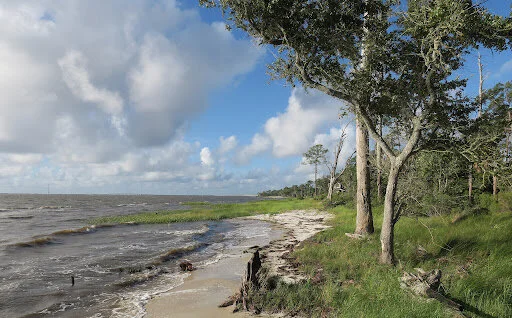Meet Author Marvin Cook of the Recently Published Children’s Book, They all called him PINKY
Review by Donna Legare, retired co-founder of Native Nurseries
In 2018 an unaccompanied American Flamingo from the Caribbean appeared at the St. Marks National Wildlife Refuge in Wakulla County, blown in by Hurricane Michael. Seasoned birders, nature photographers, and anyone interested in nature visited the refuge over the next five years for a chance to see this North Florida rarity, popularly called Pinky, who famously graced the pages of the Tallahassee Democrat and the screens of local TV stations.
Where did he come from? Where did he go? How did he get here? What did he eat? Why did he stay so long?
Author Marvin Cook has used his creative imagination backed up with a thorough knowledge of natural history, to create a children’s story book entitled They all called him PINKY to answer these questions and to speculate on possibilities.
While reading this 70-page chapter book aimed at second to fifth graders, I learned that there are three large populations of the American Flamingo, also called Caribbean Flamingo, – one on the Yucatan Peninsula in Mexico, one in Cuba, and another in the lower Bahamas. Cook speculates that Pinky could have been picked up in Cuba and transported here by the hurricane.
Cook is the retired co-founder a company that created imaginative and informative signs, dioramas and displays to interpret the natural history of parks and wildlife refuges throughout the United States and Caribbean. He is a talented artist; his colorful drawings throughout the book enhance the story.
It is a fictional story, complete with friends and natural enemies. A flock of Roseate Spoonbills and a single Great Blue Heron befriend him. It is true that spoonbills are usually seen together in small flocks, while great blue herons are loners. Allie the American Alligator tries to catch and eat him; we learn a little about the diet of alligators in the salt marsh. There are artistic maps of Florida and the Caribbean and nice renderings of the St. Marks lighthouse. This story will appeal to children, who will easily absorb the natural history facts about flamingos and the salt marsh ecosystem of St. Marks.
The book also includes a glossary of interesting words used throughout, a Learn More section about the bird species in the book, and a brief non-fictional history of the five year long visit of this remarkable flamingo.



























